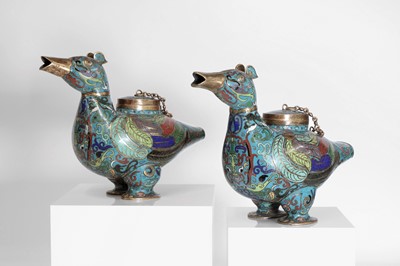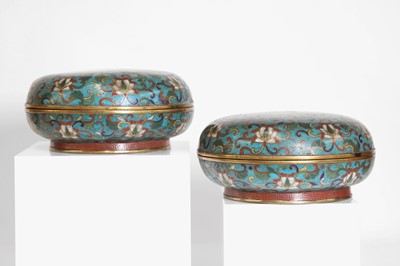Cloisonné Works of Art
Cloisonné is characterised by colourful enamelwork on metal. It is achieved with coloured glass paste placed within enclosures made of copper or bronze wires, which have been bent of hammered into the desired pattern. Known as cloisons (French for “partitions”), the enclosures are either pasted or soldered onto the vessel. The glass paste, or enamel, is coloured with metallic oxide and painted into the contained areas and the vessel is then usually fired at a fairly low temperature to seal the new design. Once this process is complete, the surface of the vessel is rubbed until the edges of the cloisons are visible. They are then gilded, often on the edges, in the interior, and on the base.
Cloisonné objects were usually used for the furnishing of temples and palaces, as their beauty and craftmanship needed to create them was considered appropriate to the function of these buildings. However, it wasn’t until the Ming Dynasty (1368-1644) that cloisonné art became highly developed and sought after among the Chinese imperial court and the elite. The Qing Dynasty (1644-1912) also saw a booming of cloisonné production, with various regional styles and techniques emerging. Traditional cloisonné pieces are highly collectible and can be found in various forms such as vases, bowls, censers, and other decorative objects.










